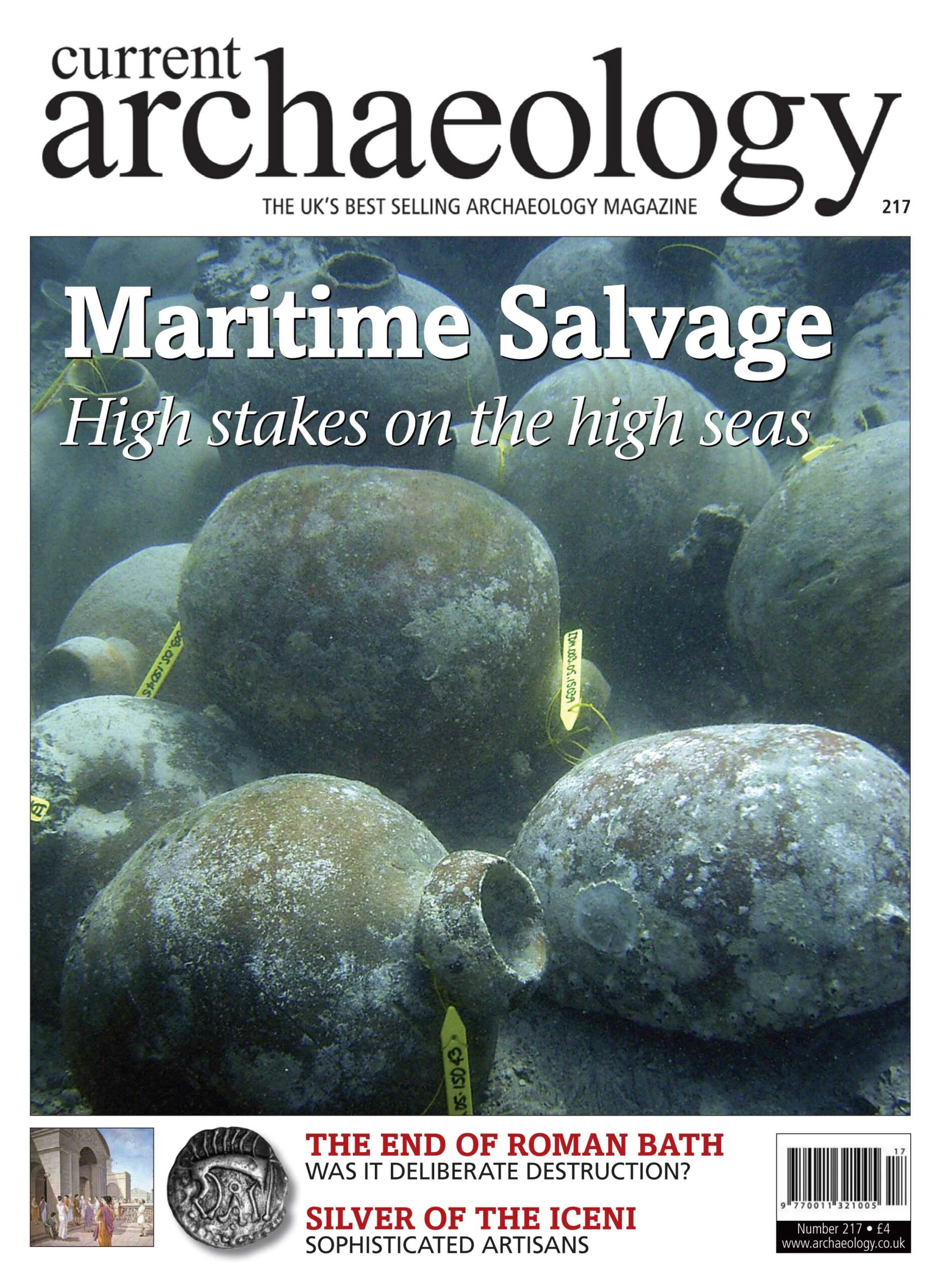We clearly got the message at Archaeology ’08 that the Romans are as popular as ever, so Roman Britain is a big theme this issue! Three of our features are about important Roman sites ‚ The Ditches, Fishbourne and Bath. The first two deal with that fascinating period between the two Roman invasions of Britain, and the growing evidence for the establishment of a Roman client kingdom in southern Britain in the intervening century. Marking David Rudkin’s retirement as Director at Fishbourne, we review what we have learnt about this key early Roman site during his 28 years at the helm – and what remains to be learned in the future from both sites. The Bath feature examines what happened when the Romans left this jewel in the Empire’s crown. Our cover story tackles the very hot debate between commercial maritime salvage companies and academic archaeology: is it modern-day piracy? How can international legislation attempt to resolve this situation, and how feasible are the changes that are needed? As ever, if you have any comments on our features, please write us a letter, or visit the website and drop us a note in the new Comments box…
HIGH STAKES ON THE HIGH SEAS:
James Morrison takes CA inside the growing danger to maritime archaeology posed by private salvers – is there any ‘middle ground’?
SILVER OF THE ICENI:
The traditional image is of backward, hostile, blue-painted hordes led by a red-haired fury. Unlike the Celtic sophisticates of the South East, with their wheel-thrown tablewares and imported wines, the Norfolk Iceni were rural primitives. Or were they? Megan Dennis, specialist in Late Iron Age metalwork, pays tribute to the high culture of Boudica’s people.
THE END OF ROMAN BATH:
Bath ‚ Aquae Sulis ‚ was one of the jewels of Romano-British civilisation. What happened to it when the Romans left? Roman specialist James Gerrard has been studying the tantalising evidence for the end of Roman Bath. Was the destruction of the Temple of Sulis Minerva the deliberate act of a post-Roman Christian ruler?
THE DITCHES: THE FIRST ROMAN VILLA IN THE WEST
In the mid-1980s, a group of archaeology graduates excavated a Roman villa in the Cotswolds. Twenty years on, as the excavation report nears completion, the true significance of the villa is only just being revealed. Not only is it the earliest known example of a Roman stone building in the Cotswolds (built AD 75‚100), it stands within a late Iron Age enclosure that also contains a contemporary round house. To make matters even more interesting, the site is adjacent to Bagendon, long claimed as the ‘tribal capital of the Dubunni’, and finds from the site include coin moulds and a touchstone used for testing the purity of gold. What does it all mean? Christopher Catling reports.
RUDKIN AND FISHBOURNE:
After 28 years in charge of Fishbourne Roman Palace, David Rudkin is retiring. Though we have learnt a lot during this time, much remains unknown. Current Archaeology spoke to David about his tenure, his excavations, and his ideas for the future of Fishbourne.

